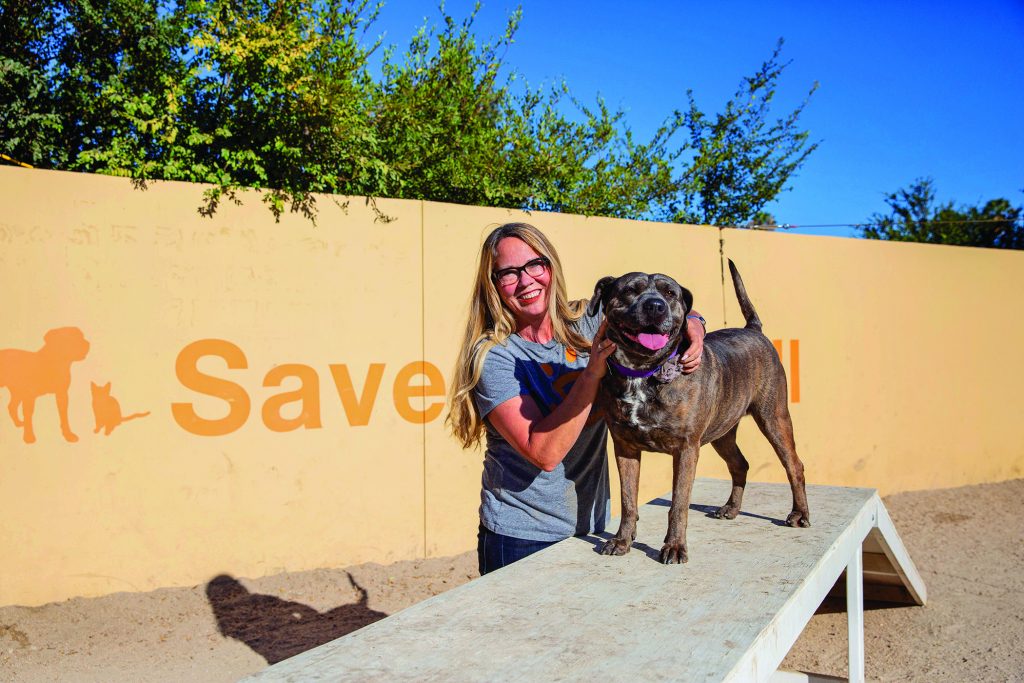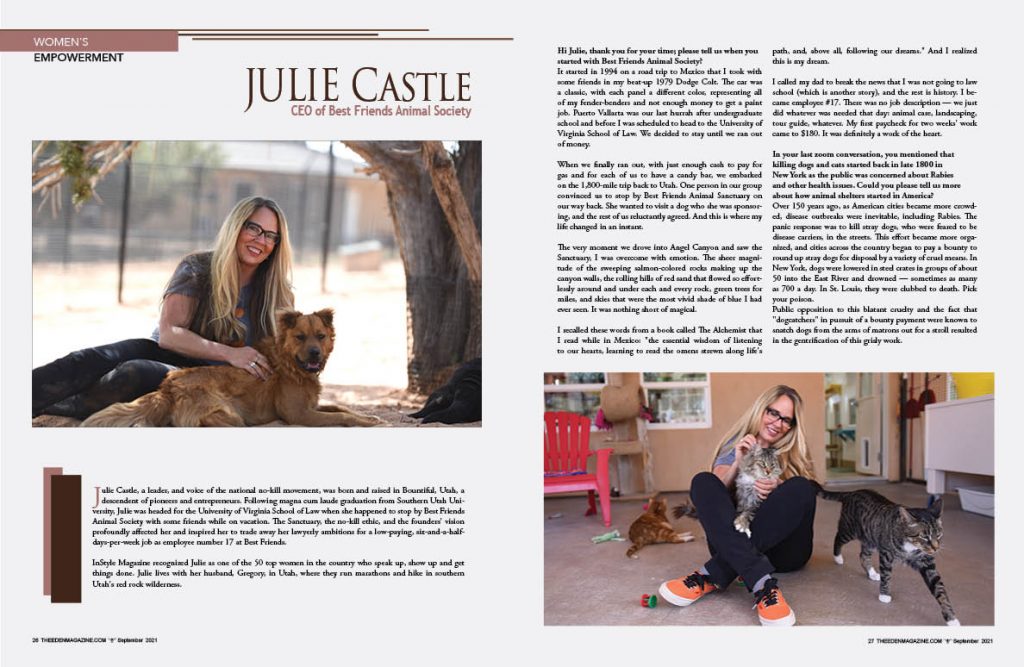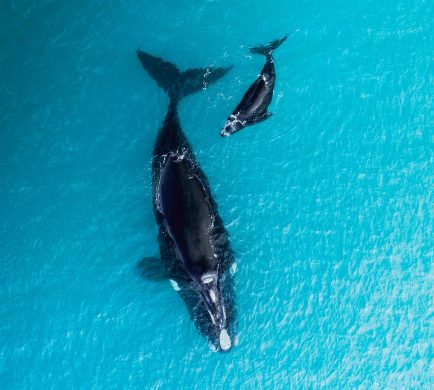Julie Castle, a leader, and voice of the national no-kill movement, was born and raised in Bountiful, Utah, a descendent of pioneers and entrepreneurs. Following magna cum laude graduation from Southern Utah University, Julie was headed for the University of Virginia School of Law when she happened to stop by Best Friends Animal Society with some friends while on vacation. The Sanctuary, the no-kill ethic, and the founders’ vision profoundly affected her and inspired her to trade away her lawyerly ambitions for a low-paying, six-and-a-half-days-per-week job as employee number 17 at Best Friends.
InStyle Magazine recognized Julie as one of the 50 top women in the country who speak up, show up and get things done. Julie lives with her husband, Gregory, in Utah, where they run marathons and hike in southern Utah’s red rock wilderness.
Hi Julie, thank you for your time; please tell us when you started with Best Friends Animal Society?It started in 1994 on a road trip to Mexico that I took with some friends in my beat-up 1979 Dodge Colt. The car was a classic, with each panel a different color, representing all of my fender-benders and not enough money to get a paint job. Puerto Vallarta was our last hurrah after undergraduate school and before I was scheduled to head to the University of Virginia School of Law. We decided to stay until we ran out of money.
When we finally ran out, with just enough cash to pay for gas and for each of us to have a candy bar, we embarked on the 1,800-mile trip back to Utah. One person in our group convinced us to stop by Best Friends Animal Sanctuary on our way back. She wanted to visit a dog who she was sponsoring, and the rest of us reluctantly agreed. And this is where my life changed in an instant.
The very moment we drove into Angel Canyon and saw the Sanctuary, I was overcome with emotion. The sheer magnitude of the sweeping salmon-colored rocks making up the canyon walls, the rolling hills of red sand that flowed so effortlessly around and under each and every rock, green trees for miles, and skies that were the most vivid shade of blue I had ever seen. It was nothing short of magical.
I recalled these words from a book called The Alchemist that I read while in Mexico: “the essential wisdom of listening to our hearts, learning to read the omens strewn along life’s path, and, above all, following our dreams.” And I realized this is my dream.
I called my dad to break the news that I was not going to law school (which is another story), and the rest is history. I became employee #17. There was no job description — we just did whatever was needed that day: animal care, landscaping, tour guide, whatever. My first paycheck for two weeks’ work came to $180. It was definitely a work of the heart.
In your last zoom conversation, you mentioned that killing dogs and cats started back in late 1800 in New York as the public was concerned about Rabies and other health issues. Could you please tell us more about how animal shelters started in America?
Over 150 years ago, as American cities became more crowded, disease outbreaks were inevitable, including Rabies. The panic response was to kill stray dogs, who were feared to be disease carriers, in the streets. This effort became more organized, and cities across the country began to pay a bounty to round up stray dogs for disposal by a variety of cruel means. In New York, dogs were lowered in steel crates in groups of about 50 into the East River and drowned — sometimes as many as 700 a day. In St. Louis, they were clubbed to death. Pick your poison.
Public opposition to this blatant cruelty and the fact that “dogcatchers” in pursuit of a bounty payment were known to snatch dogs from the arms of matrons out for a stroll resulted in the gentrification of this grisly work.

Enter animal welfare. The first such group was the Women’s Pennsylvania SPCA, founded in 1869. They at least treated the animals with respect and made some effort to return strays to owners, but killing was very much a part of the program, except that now it was done behind closed doors rather than via public executions, and they used gas rather than drowning or clubbing. Shelter after shelter began to pop up across the country, and gassing was followed by decompression chambers, which were followed in the 1960s and 1970s by lethal injection.
How many animals die yearly in the shelters in the United States? Have we improved this number from 10 years ago?
83% of the 4.3 million cats and dogs that entered U.S. shelters were saved in 2020. Sadly, 347,000 cats and dogs were killed. 51% of animals entering shelters are dogs, 49% are cats. We have seen a decline in shelter killing across the country for about the past 30 years or so, down from an estimated 17 million in the 1980s to 347,000 last year.
We started collecting data in earnest in 2016 and can say that we have seen a 76% decrease in animals killed in shelters just since 2015.
What can we do to improve more and to save more animals’ life?
The community’s commitment to making a difference is what drives this movement. Whether getting involved in grassroots advocacy, fostering animals from local shelters, or improving pet-inclusive housing and policies, all of these are critical to improving and saving more lives.
How can we be to the point that all the shelters be no-kill shelters?
As a philosophical principle, No-kill means saving every dog or cat in a shelter that can be saved. But it’s helpful to have a way to measure lifesaving progress as we move forward together clearly, and that’s where the 90% benchmark comes in.
A 90% save rate for animals entering a shelter is a meaningful and common-sense benchmark for measuring lifesaving progress. Typically, the number of pets who are suffering from irreparable medical or behavioral issues that compromise their quality of life and prevent them from being rehomed is not more than 10% of all dogs and cats entering shelters. Therefore, we designate shelters that meet the 90% save-rate benchmark as no-kill.
However, the ultimate goal is to ensure that every shelter has the resources to save every dog and cat who can be saved, whether that percentage is 90% or something else. But first, we want to help every shelter in every community reach the 90% no-kill benchmark by 2025.
The work won’t stop there, however. We’ll need to continue addressing the systemic issues that put pets at risk to ensure that every savable animal can be saved and alleviate suffering and preserve the human-animal bond.
When animal shelters, governments, and community members value the philosophical principles of no-kill and work together to implement systems and programs to uphold those principles, it is possible to achieve a community sheltering system in which euthanasia is performed only as an act of mercy. Community-supported sheltering is the intersection among animal shelters, the community, and the government to support and leverage each other’s resources to protect and serve the most vulnerable pets and their people in a community.
For far too long, the burden has been placed on shelters themselves to save the lives of the animals in their care. It is imperative that the community and local government provide their shelters with the support they need to succeed.
Many states still using the gas chamber to euthanizing animals, and we all know this is the most horrible way to end a life. How can we stop this horror, to ban it nationwide?
Making much-needed change starts with the support of the public. To end these horrific practices, we need public support in reaching out to our leaders (i.e., local officials, state officials, federal representation) and urging them to stop using these methods. Signing petitions, making calls, and writing Letters to the Editor are all great ways to bring these horrors to light in the hope of change.
What professional accomplishment are you most proud of?
After many challenging, inspiring, grueling, heartwarming, tear-jerking, life-changing years of working to take the city of Los Angeles from a place where only 57% of dogs and cats were making it out of shelters alive to the biggest no-kill city in America, the NKLA (No-Kill Los Angeles) Coalition and animal lovers throughout the city have succeeded in boosting the city over the no-kill threshold.
The 2020 save rate in the city of Los Angeles was 90.49%. L.A. is now NKLA! Our work in L.A. began in 1991 as one of our first outreach programs. We launched NKLA in April 2012 after 18 months of organization and analysis. In 2011, the year prior to the NKLA launch, Los Angeles Animal Services (LAAS) took in more than 56,000 dogs and cats. About 18,000 were killed, and, significantly, more than one-third were neonatal kittens. That fact gave rise to the largest neonatal kitten program anywhere, ever. Since 2012, more than 70,000 dogs and cats have come through NKLA programs alone.
The achievement of NKLA, a Best Friends initiative, represents 10 years of passion, commitment, blood, sweat, and tears by LAAS, coalition partners, the people of Los Angeles, and beyond. Most important of all, this work represents cumulatively hundreds of thousands of animals saved, and tens of thousands more saved every single year.
You devote your heart and soul to thousands of shelter pets nationwide to help find homes forever. What is the most challenging aspect you are facing in this path?
The most challenging aspect is that while we know what works to save lives, it’s really hard work that, right now, is complicated by this crazy new world that we find ourselves in. For instance, shelters all across the country are struggling- workers are burned out and struggling to keep up. Like many sectors, many shelters are understaffed, yet as the country opens up more, we see a sudden increase in animals entering shelters. This “summer influx” is typical, but what was different this June is that so many shelters and other animal welfare organizations are operating with skeleton crews, and we are hearing sad stories from all across the country that while the shelter workers are working long and hard to save as many lives as they can, many can’t keep up with the intake. So, it’s more important than ever for people to reach out and support their local shelters- by fostering, adopting, and donating.
Do you have an educational program for the public in Best Friend Animal Society?
We at Best Friends created an award-winning Lifesaving Dashboard for the public to access our shelter dataset, which is the most comprehensive compilation of shelter data in the U.S. It allows people to access information about shelters in their area to create more effective strategies to save more lives. We also offer volunteer opportunities with the organization and have a wide range of network partners throughout the country. People can also sign up to join our 2025 Action Team to learn how to help take their own community no-kill and learn about the legislation we are supporting to increase lifesaving and push the country to no-kill by 2025.
What is the next thing to do?
We are determined to take the entire country to no-kill by 2025. We’ve got the expertise, and we’ve got the passion. And we’ve got the road map. So together, we are creating progressive new initiatives while growing the programs — trap-neuter-return for community cats, shelter foster networking, online resource centers to provide neighborhood support, and more — that have already brought us close to our goal. We need to continue spreading our message to communities across the country and continue to get people involved. Together is the only way we reach success.







